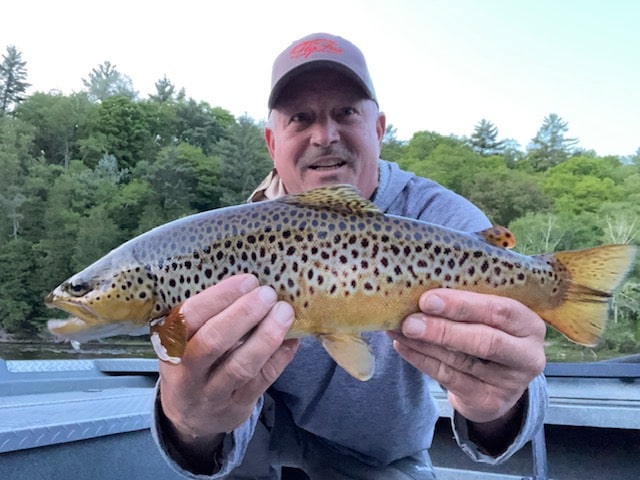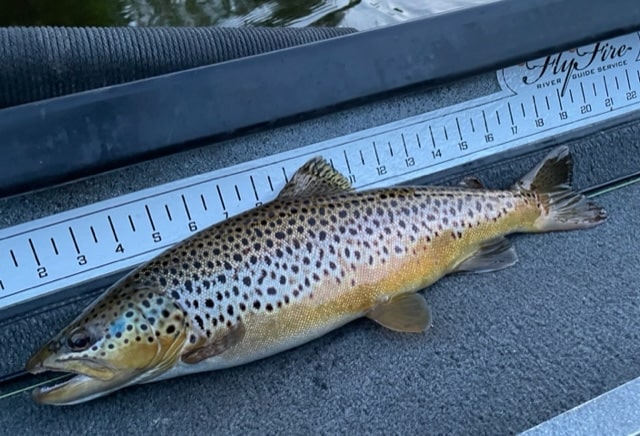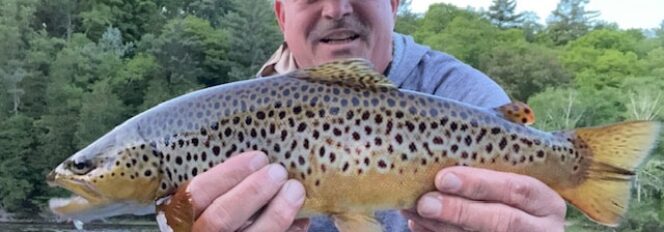
Here’s a gorgeously colored Muskegon river brown trout that absolutely smashed my new Gray Drake dry fly pattern as it gently fell to the water just in front of his face in his feeding lane.
In the last blog we discussed how to target rising trout and time their intervals between rises to improve your chances of getting that trout to strike.
Well now, I’d like to take it one step further, by discussing with you the technique of gently landing your fly presentation just a few feet upstream of their face in their feeding lane, so they physically see the fly gently hit the water in front of them in a realistic approach that helps to get their attention and trigger the strike.
These larger brown and rainbow trout are not stupid. Everything has to look real to them just as natural flies appear to them as they fall freely to the water in their feeding lane and get gulped up by that hungry trout.
If your fly presentation looks unrealistic in any way as it hits the water in front of them, the trout tend not to attack. Flies hitting the water too hard, or coming down the trout’s feeding lane on an angle, or if your fly line hits the water before your fly lands, or if you have a big loop in your fly line as it approaches the trout’s feeding lane, all set off warning signs to the trout that your presentation looks unrealistic and to lay off and not strike.
Especially with the larger trout; your fly presentation has to look as real as possible to trigger the strike. When the trout start feeding aggressively and you’re able to time their rising intervals as we discussed in the last blog; it’s time to cast directly at that specific trout just a few feet upstream of his next rise.

You want that trout to see your fly land gently (before your fly line hits the water) just a few feet upstream of his face in his feeding lane, just as a real fly would. Doing so causes the trout to see the dry fly land (just as he would with a naturally falling fly) and gets him excited and motivated to attack the fly as it slowly drifts over his head. When the trout sees the fly fall in front of him, it gets their attention and gives you a better chance to trigger the strike!
When trout physically see your fly land in a realistic way just in front of their feeding lane, it triggers a response of get ready to attack! Kind of like a snake seeing an unsuspecting mouse about to cross it’s path. The snake gets ready to attack the mouse as it gets in range, so do the trout! The key is to make your fly look as realistic as possible by landing the fly softly just a few feet upstream of the trout in his feeding lane. Doing so triggers a response in the trout to get ready to attack and gives you a much better chance to entice the trout to strike. Give it a try next time you encounter trout feeding top water!
Despite the Gray Drake hatch starting to come to an end, trout are still actively feeding top water with caddis hatches taking center stage followed by cahills, hendricks, and blue winged olives. The extreme heat followed by some recent cool weather have the trout feeding actively throughout the river system and June is a great time of year to get out and fly fish the Muskegon river!
post by: jon fortuna
